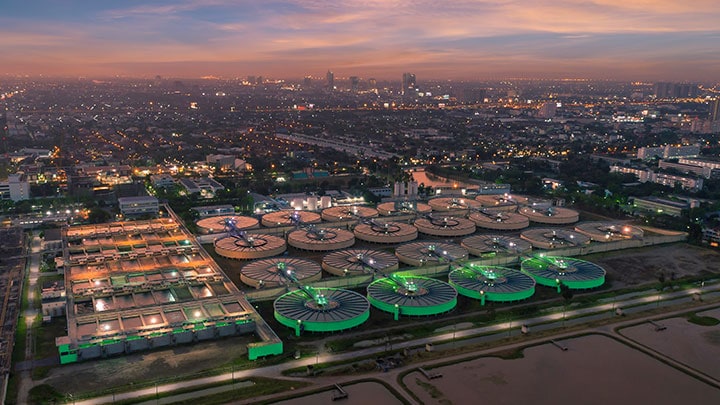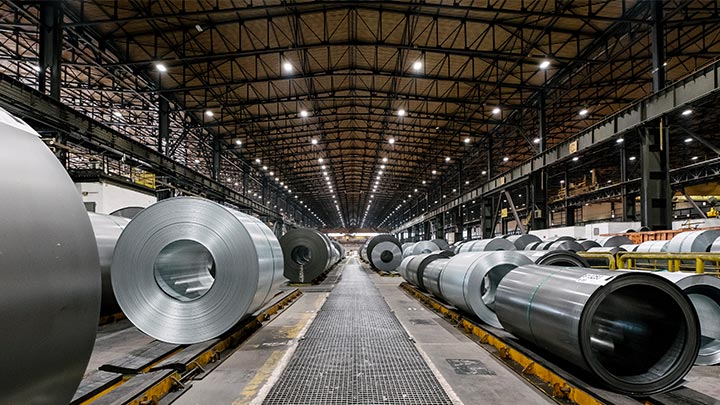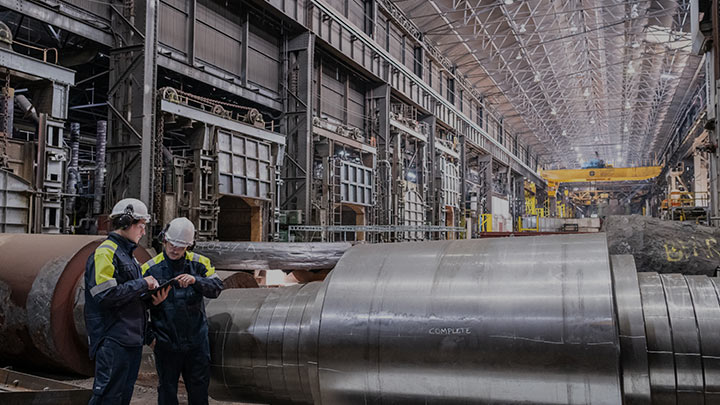This chart also makes clear the startling results that LaaS can deliver when it comes to generating free cash flow.
The green difference
Fewer burdensome capital assets, relief from the labor- and capital-intensive "busy work" of ownership, and free cash flow: these are valuable benefits for any organization. But they aren't the only advantages that LaaS brings.
The best LaaS platforms are defined by their connectivity. In addition to providing, naturally enough, traditional illumination functions, these "smart" platforms serve as ideal foundation for deploying the combination of sensor technology and data analytics known as the Internet of Things (IoT). Like any connected lighting system, an LaaS system with embedded sensors can collect information from every square meter of its premises (lighting is more or less ubiquitous, after all). Channeled securely back to the cloud and analyzed, this data can inform key management decisions.
Using the insights derived from occupancy and presence data, for example, a logistics facility can organize its stock to optimize order picking. A manufacturer can better deploy raw materials or workstations. And so on.
At the extreme, numerous IoT-enabled industrial facilities can function more or less autonomously, with oversight exercised remotely—an important capability in a world reeling from the effects of a pandemic. More IoT-enabled capabilities will become mainstream as the technology inevitably improves, sensing becomes more precise, analysis becomes deeper, and open APIs make it easier to integrate smart systems together.
IoT capabilities such as these also make facilities more pleasant and safer for workers. More context-responsive lighting results in better task performance and in fewer manufacturing rejects—but its most important result is fewer accidents.
For the sake of the climate
LaaS can benefit the climate by making industrial facilities more sustainable. More efficient IoT-powered industrial processes mean smaller carbon footprints. Smart lighting that dims itself when natural light floods a facility is much more energy-efficient. Sensor-bearing luminaires that can signal in advance when they need maintenance, avoiding unplanned shutdowns that degrade efficiency, help the climate too.
A connected lighting system also help to keep track of energy savings, identifying both efficiencies and areas that could use additional streamlining. Managers can tweak settings and compare how one facility uses energy as compared to another. Measuring things is a first step to improving them—and measuring them more effectively will improve things faster.
Reporting will also help organizations comply with efficiency regulations that will only proliferate as the global climate response intensifies. And reporting will make it easier acquire LEED or other well building certifications, potentially boosting real estate values and triggering green subsidies and tax breaks.
A new way of doing things
Certain sorts of facility are well positioned to realize free cash flow after switching over to LaaS. Prime candidates
- have a minimum of 500 conventional light points
- log at least 4,000 burning hours per year
- have four to five years remaining on their lease or are tenant-owned by its user
- pay the equivalent of approximately 0.1 Euro/kWh
If you’re considering a switch to LaaS, be aware that the transition process may present challenges. Procuring a service is different from procuring a product, and may require the early involvement of corporate attorneys. Legal teams may need to assess outcome-based performance contracts more closely than they do standard purchase terms and conditions.
Accounting is another area that will likely require attention. Your technical accounting team will want to work with your legal team to ensure that your LaaS agreement is a true service agreement. That's important: the correct legal set-up can make possible an off-balance-sheet treatment, with all its advantages.
In the crucial matter of operations, you'll want to define a clear responsibility matrix for your teams. Engaging with a single trusted partner is the easiest way to go: you can better avoid gray areas in assigning responsibility for the deployment, functioning, and maintenance of the lighting technology you now have operating in your enterprise.
The LaaS approach is transformative. It promises to make industrial facilities more productive, financially sound, and safe—not to mention more generative of free cash flow. It also serves as an ideal jumping-off point for the kind of sustainability-minded renovation that industrial and manufacturing sectors must embrace, and soon.





